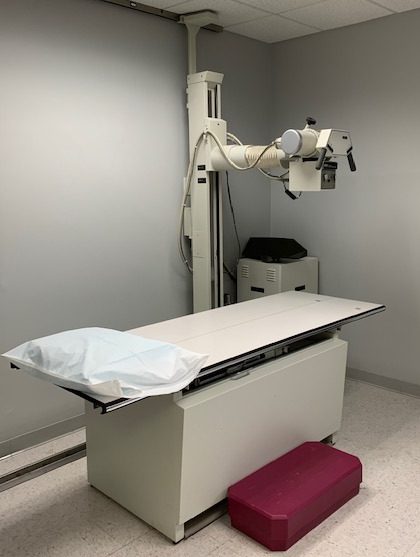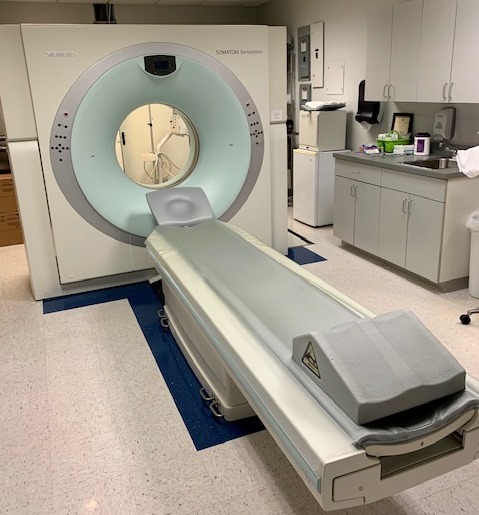X-Ray is the most common test performed today. In 1895, Wilhelm Conrad Roentgen discovered the x-ray. His remarkable achievement radically changed the practice of medicine. For the first time physicians could see beyond the skin and underlying soft tissues to the skeleton without autopsy. Roentgen did not entirely understand these unusual rays. He used the letter “x” to describe the rays because in Algebra “x” refers to an unknown.

When the spine is x-rayed, the beams pass through the skin and underlying soft tissues (e.g. muscle, ligaments, tendons). When the beams meet bone (vertebra), they stop, creating a white shadow on the film. Bone abnormalities are reflected on the finished film. Shades of gray mirror the density of the different tissues. X-rays are best for looking at bone; they are not helpful for looking at soft tissues.
X-rays are widely used today and are often called radiographs. These tests are not performed at random. An x-ray would most likely be performed for severe or chronic and progressive spine or extremity pain (e.g. leg, arm). An x-ray may help rule out particular problems involving bone and some soft tissue disorders. When an x-ray proves inconclusive, additional tests may be ordered especially if something suspicious is detected.
CT Scan (Computerized Axial Thermography) – Computed tomography, more commonly known as a CT or CAT scan, is a diagnostic medical test that, unlike traditional x-rays, produces multiple images or pictures of the inside of the body. The cross-sectional images generated during a CT scan can be reformatted in multiple planes, and can even generate three-dimensional images. These images can be viewed on a computer monitor or transferred to a CD or DVD. CT images of internal organs, bones, soft tissue and blood vessels typically provide greater detail than traditional x-rays, particularly of soft tissues and blood vessels. Using specialized equipment and expertise to create and interpret CT scans of the body, radiologists can more easily diagnose problems such as cancers, cardiovascular disease, infectious disease, appendicitis, trauma and musculoskeletal disorders.
At Alliance Medical Associates we utilize the Siemens Sensation 64 CT scanner. With this advanced technology we are also able to offer specialized non-invasive services such as CT arteriograms and Cardiac studies while using Dose modulating software to insure the lowest radiation exposure possible.

